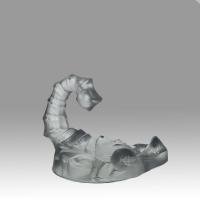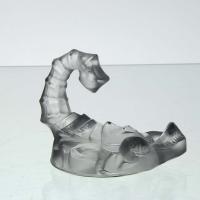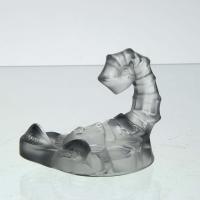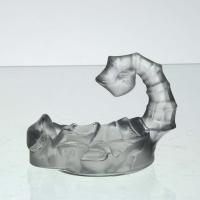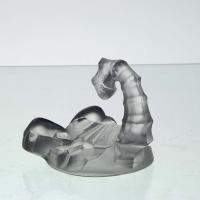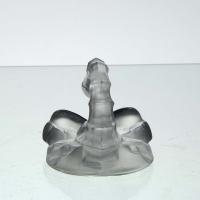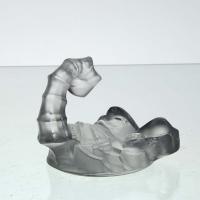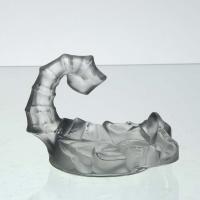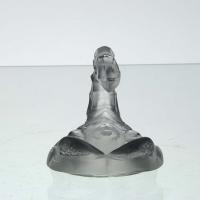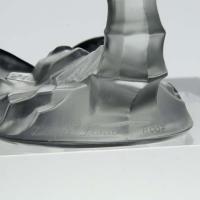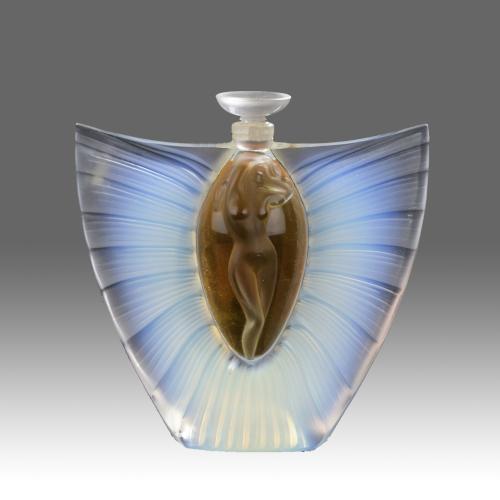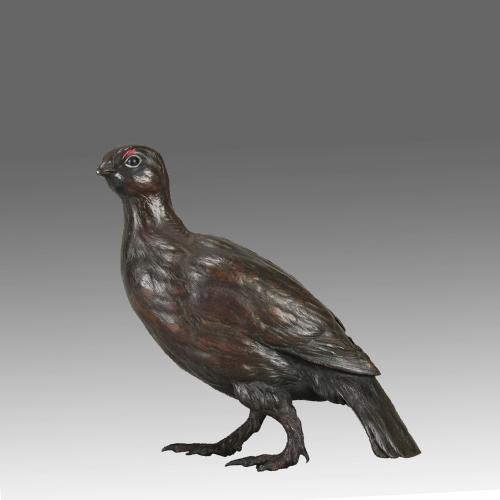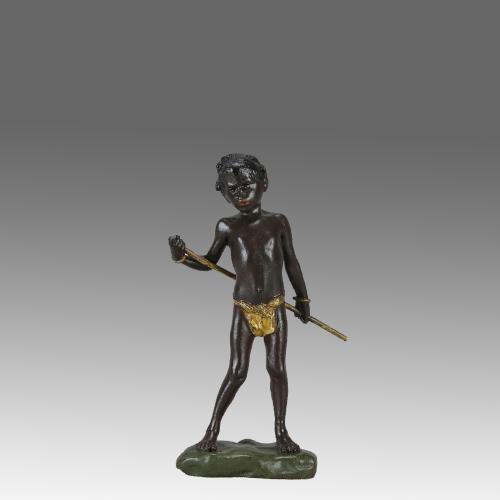
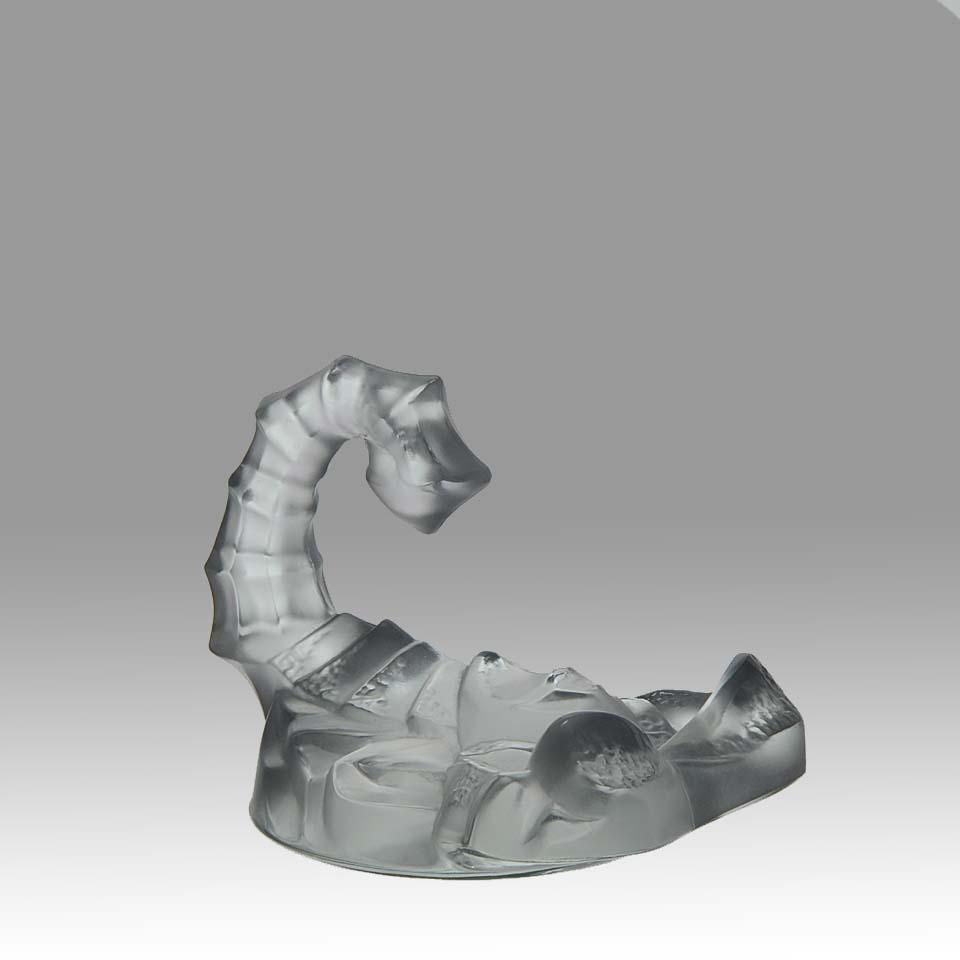
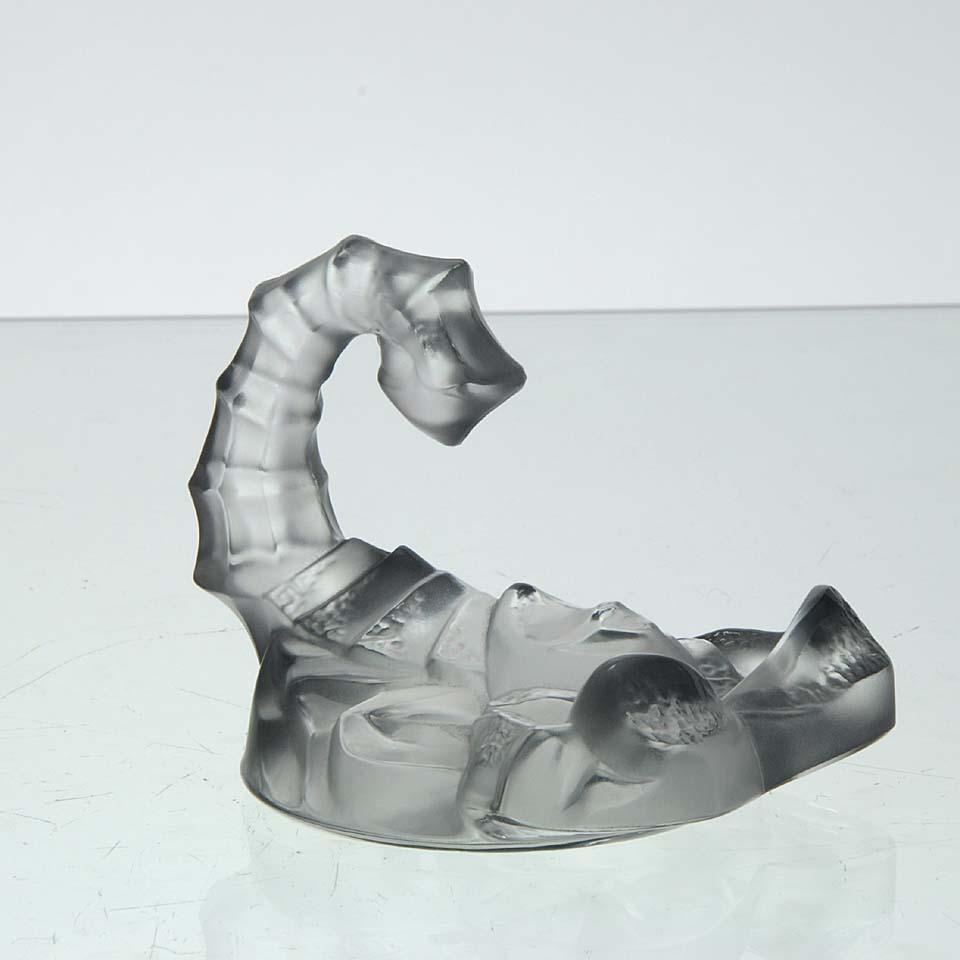
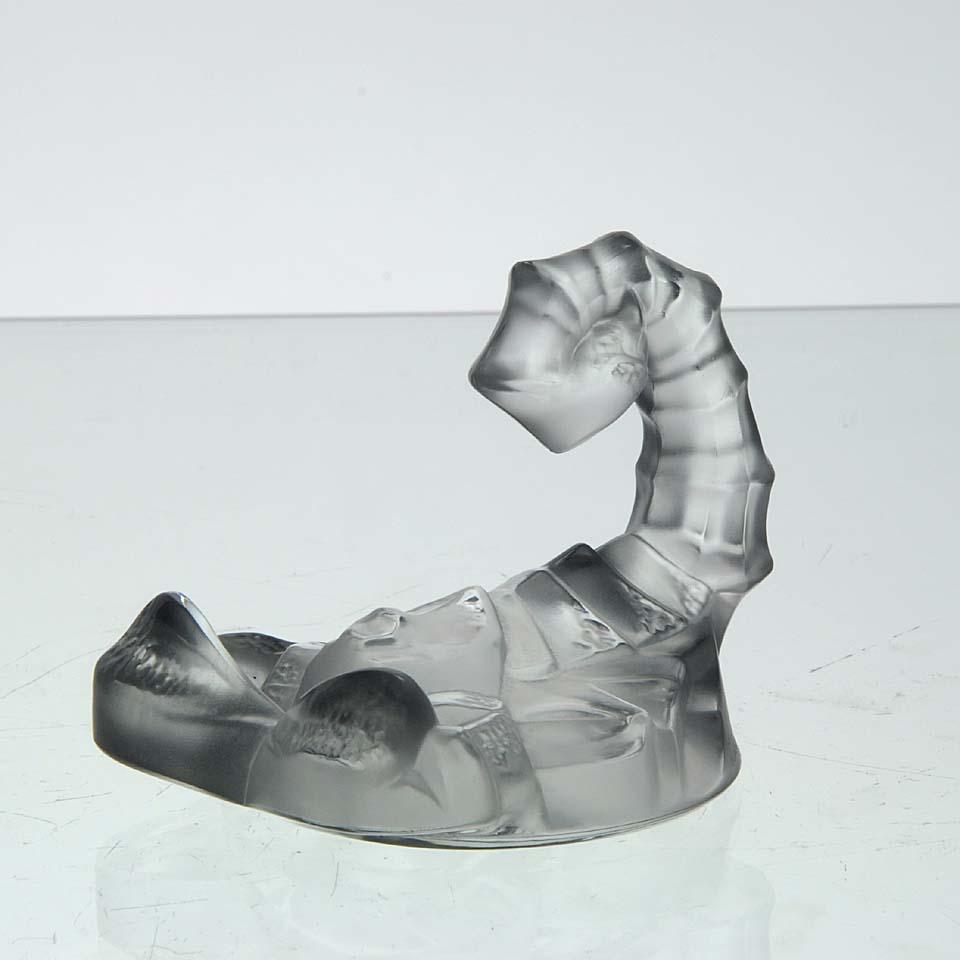
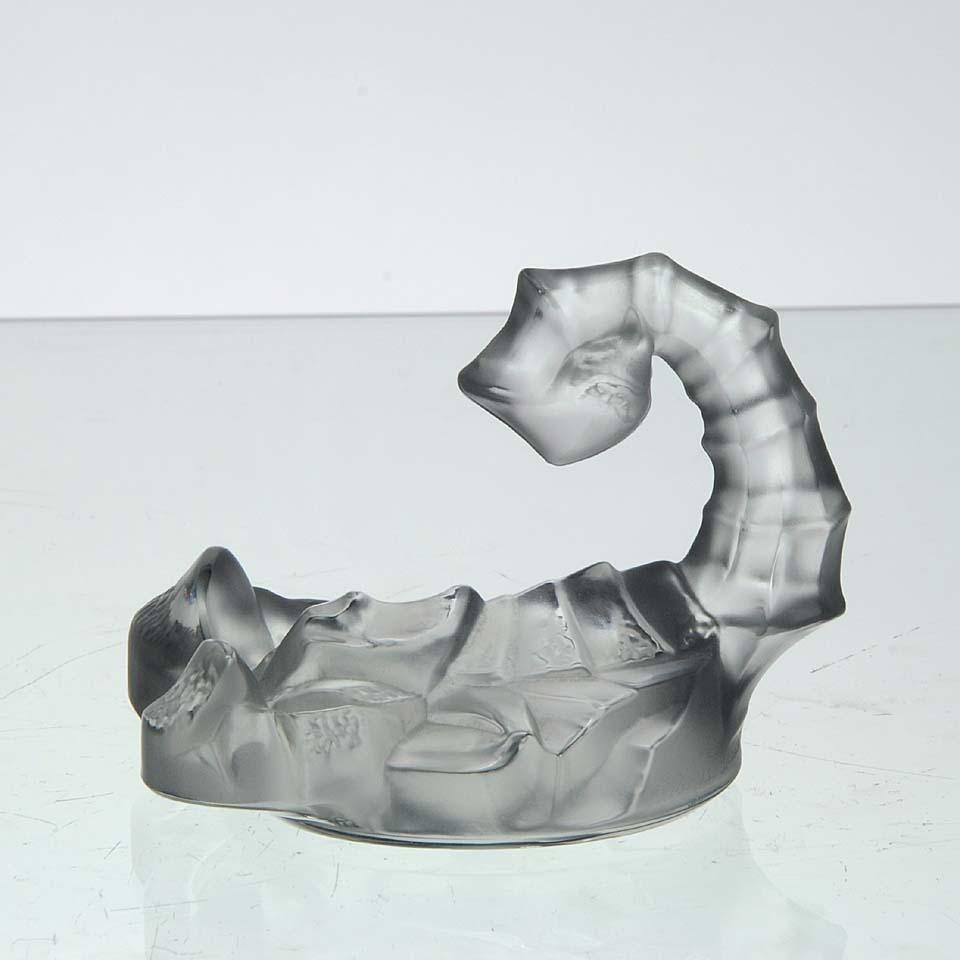
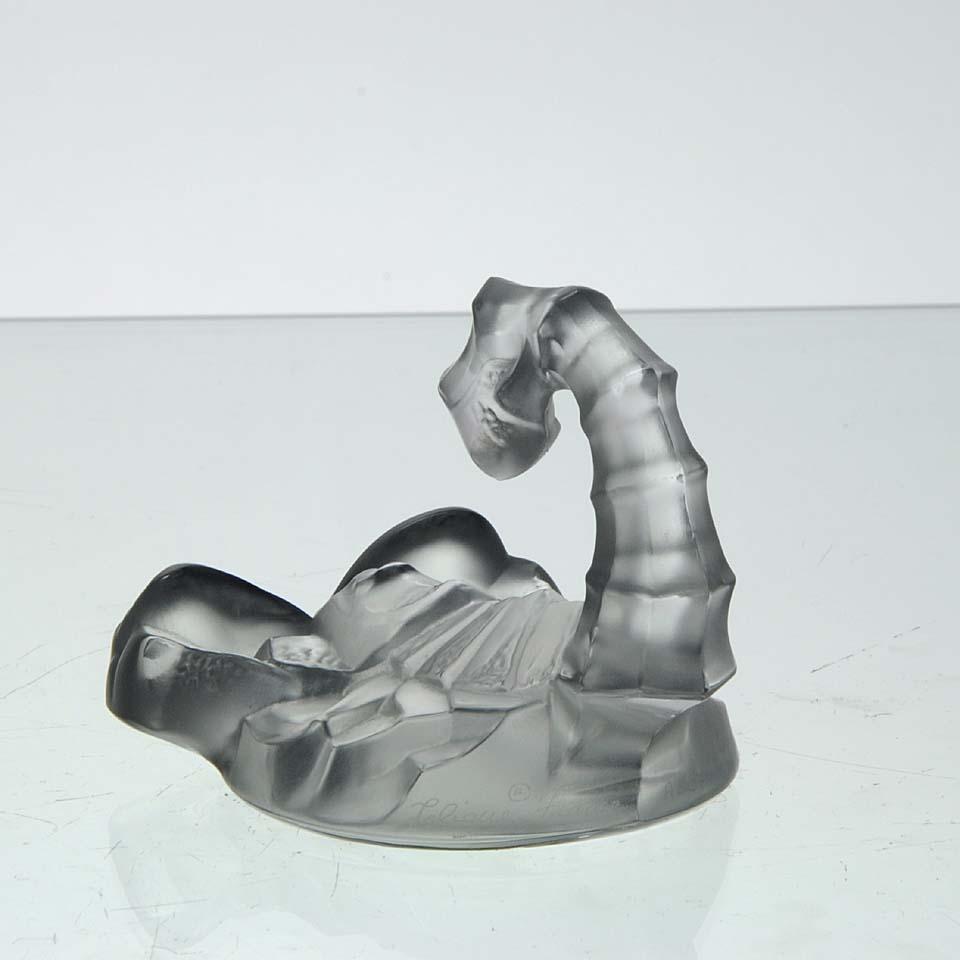
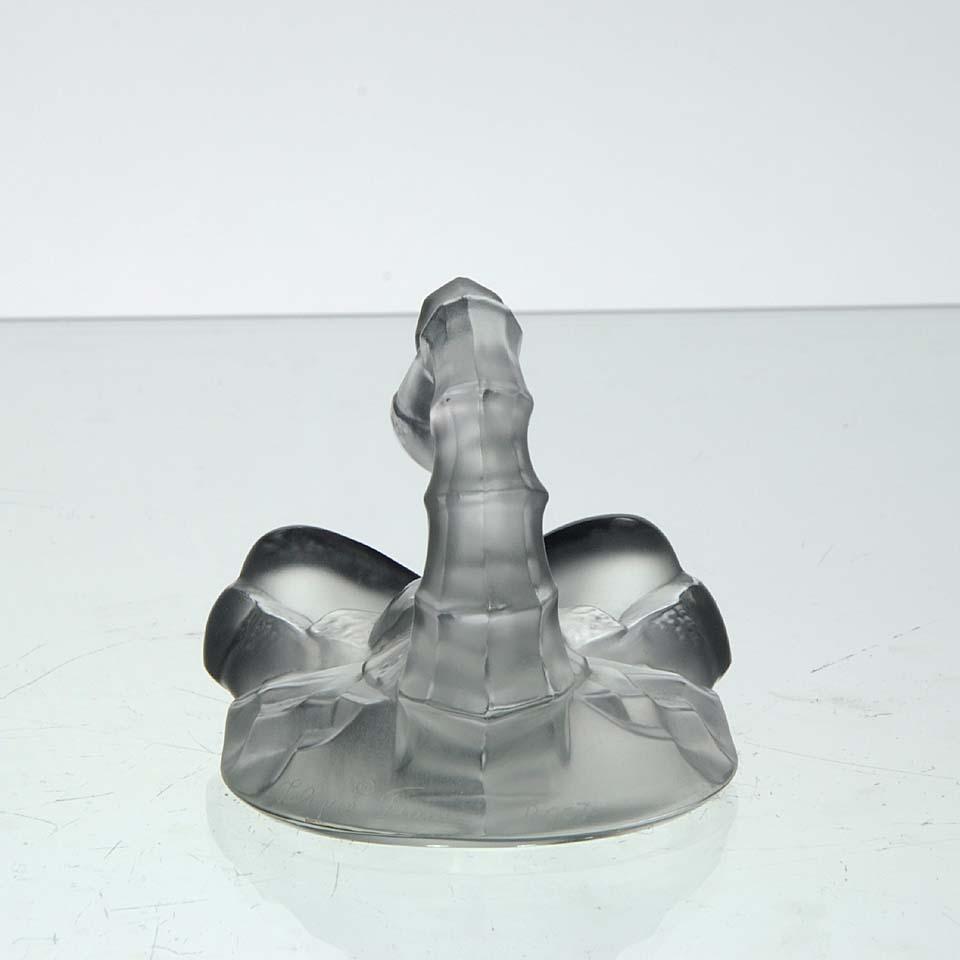
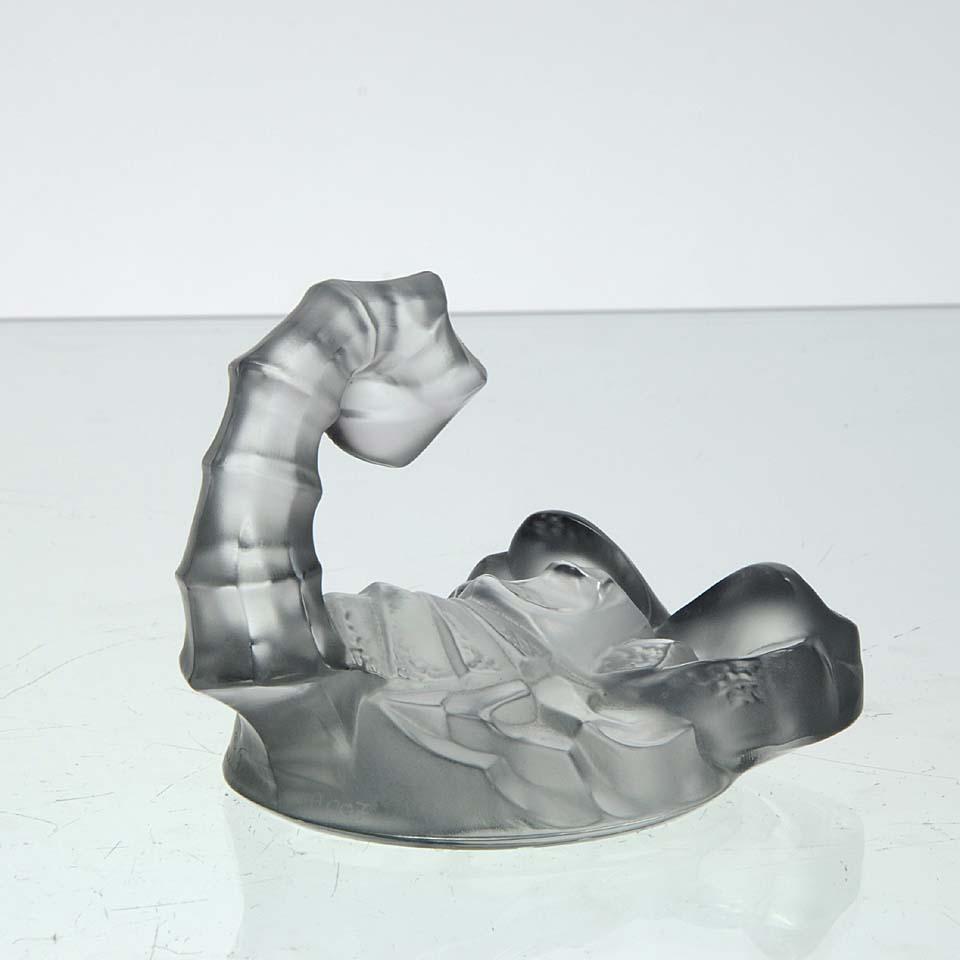
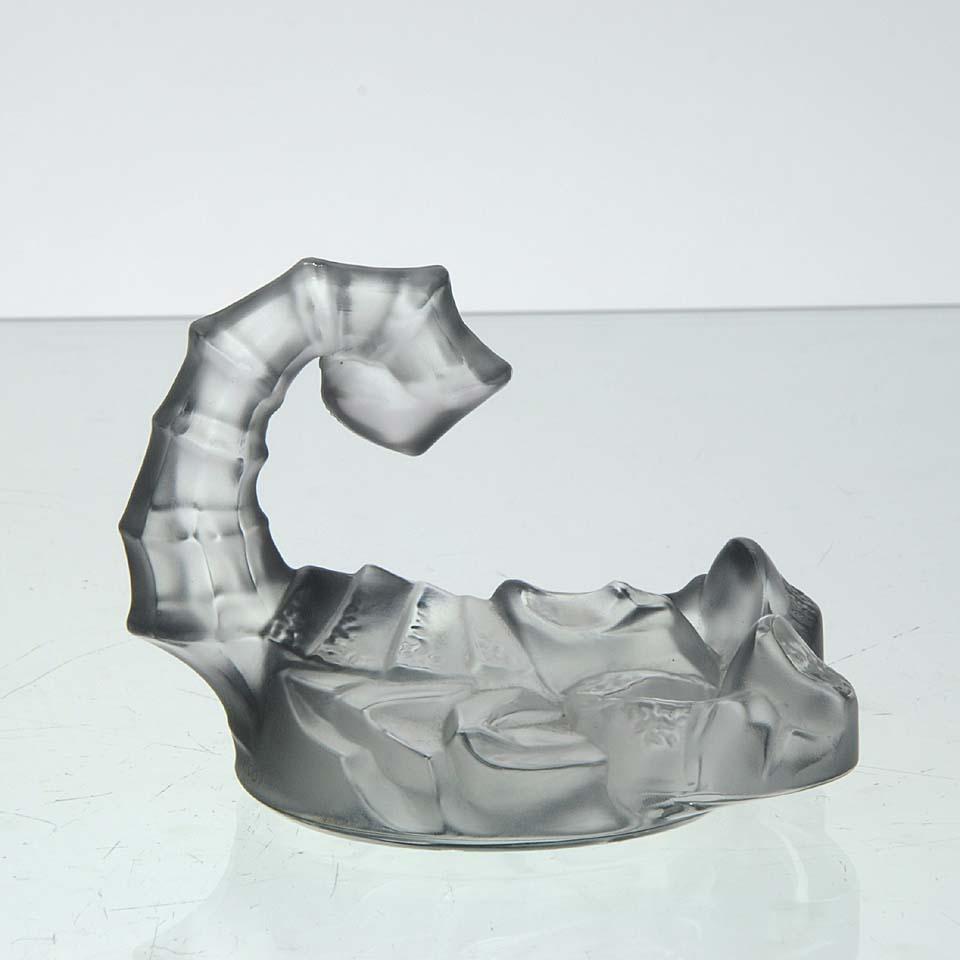
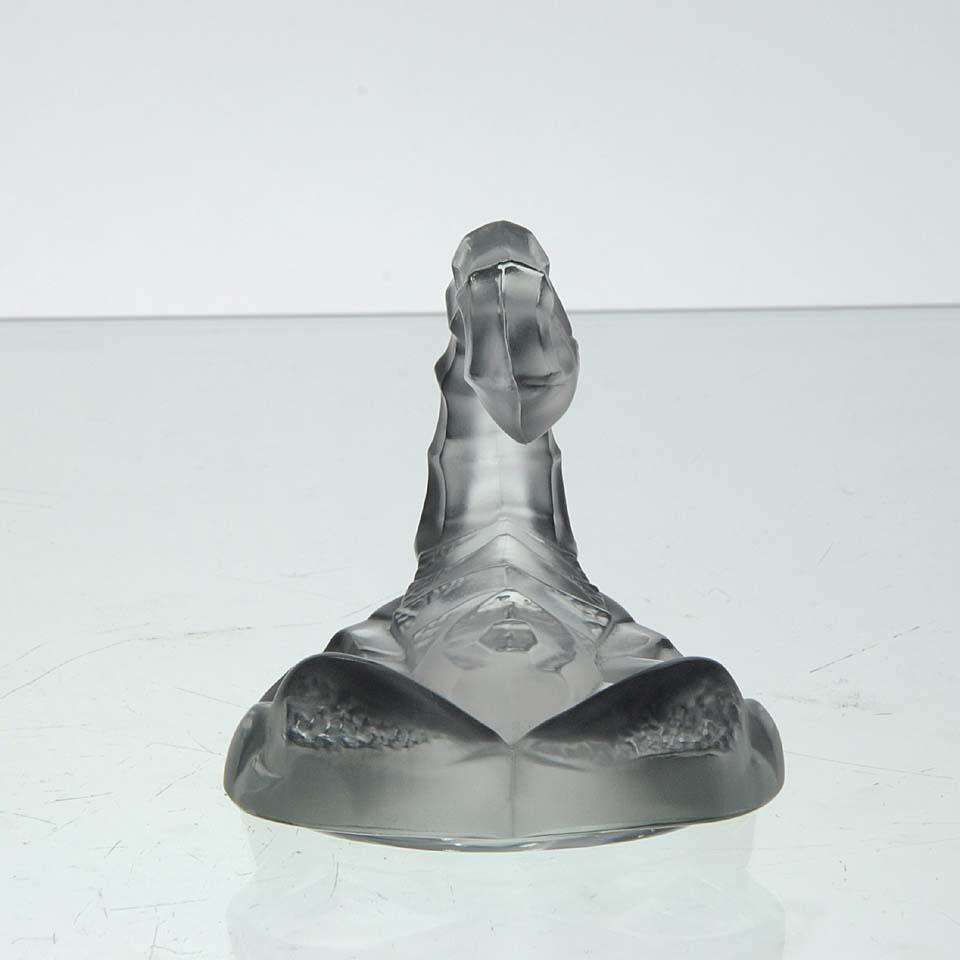
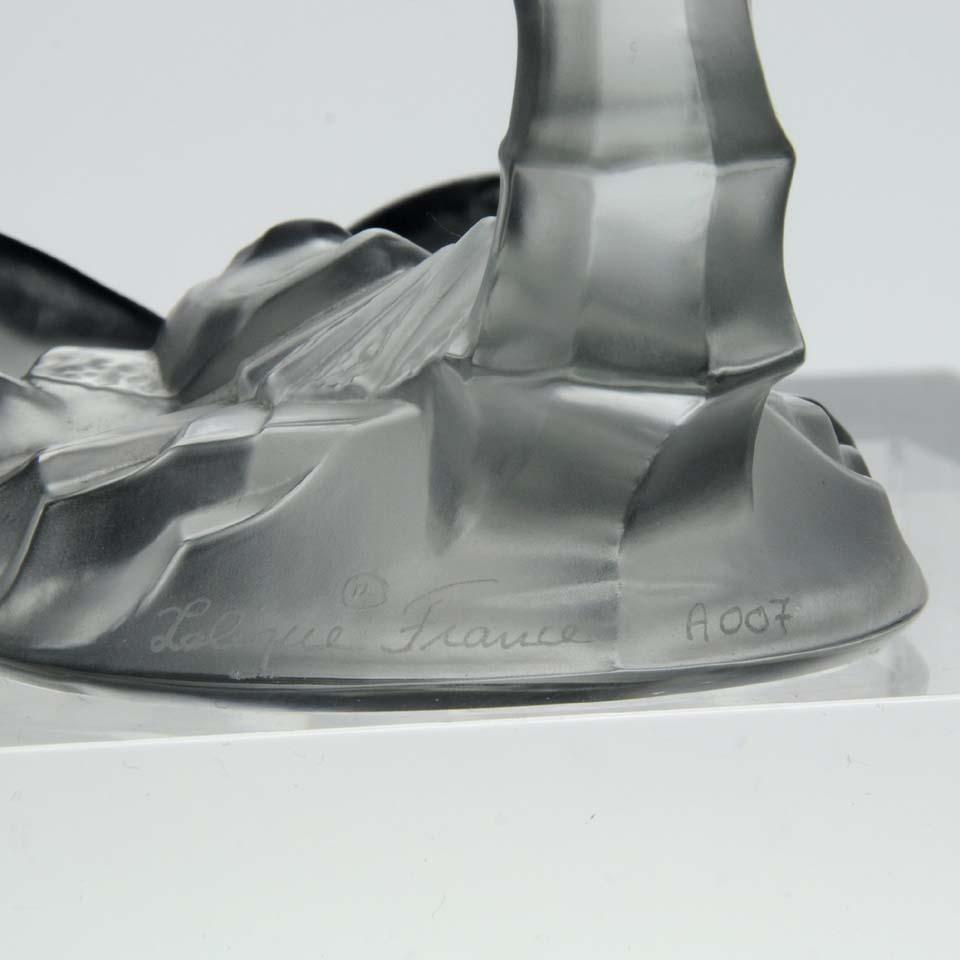
Price
£385.00This object is eligible for a Certificate of BADA Provenance
The BADA Standard
- Since 1918, BADA has been the leading association for the antiques and fine art trade
- Members are elected for their knowledge, integrity and quality of stock
- Our clients are protected by BADA’s code of conduct
- Our dealers’ membership is reviewed and renewed annually
- Bada.org is a non-profit site: clients deal directly with members and they pay no hidden fees
A surprising frosted glass figure of a scorpion with its tail raised, ready to strike its prey. The frosted glass surface with excellent hand finished detail, signed Lalique France
ADDITIONAL INFORMATION
Height: 7 cm.
Condition: Excellent Condition.
Circa: 1950.
Materials: Hand Finished Frosted Glass.
SKU: 6008.
DESCRIPTION
The Scorpion
Scorpions are creatures that belong to the class of arachnids, the subclass Dromopoda, and the order Scorpiones. In the world, there are between 1,700 and 2,000 species of scorpions organized in 13 taxonomic families.
Although there is a large number of species, only a minimum amount, approximately 35, are lethal to humans, particularly for people with health conditions, kids or seniors.
For some people, there is confusion about the official name assigned to these species. In several regions of Latin America, people refer to them as ‘alacranes,’ coming from the Arabic “al-ágrab” and in other places they are ‘scorpions,’ from the Latin “scorpio, omis,” but both denominations are correct and refer to the same animal.
Top Scorpion Facts
There are approximately 2,000 species of scorpions, according to raw estimations.
Mothers can attack and eat their young when no other food is available.
More Facts about Scorpions…
According to scientists, these creatures have existed on Earth for more than 400 million years, but their evolutionary records still have many questions that need an answer. Their ancient history is a mystery, but some think that they come from aquatic animals slowly adapted to terrestrial life.
These arachnids, which sometimes are wrongly called insects, are characterized mainly by having two large and powerful pedipalps in the form of pincers and a long and structured tail with a stinger which they use to inject their venom. In addition to that, they have eight legs, chelicerae, exoskeleton and sensory hairs that adequately help them to survive in their hostile natural environment.
The sizes, colours, and shapes of the scorpion anatomy are so diverse that are difficult to generalise. They have red, yellow or black colours, and sizes so different that they range from less than 0.6 inches to 7.8 inches.
Some Scorpion Species
Arizona Bark Scorpion
Deathstalker Scorpion
Emperor Scorpion
Fattail Scorpion
However, their size and colour do not tell us much about their danger or the level of toxicity of the poison they produce. Some believe that the large and black species are the most deadly, but curiously the small red or yellow are the ones that often cause the greatest health problems in humans. The Indian red scorpion (Hottentotta tamulus), the Arizona bark scorpion (Centruroides sculpturatus) or the Deathstalker (Leiurus quinquestriatus), are examples of scorpions that you should avoid.
Scorpions can adapt to a wide range of habitats from rainforests to arid terrains in places such as North America, Africa, and Asia, especially in India and the Middle East. They like to stay in dens, caves, trees and any place that provides them darkness and protection; they prefer to go unnoticed instead of drawing attention, thus avoiding predators and also have greater success in feeding.
Stock number
6008The BADA Standard
- Since 1918, BADA has been the leading association for the antiques and fine art trade
- Members are elected for their knowledge, integrity and quality of stock
- Our clients are protected by BADA’s code of conduct
- Our dealers’ membership is reviewed and renewed annually
- Bada.org is a non-profit site: clients deal directly with members and they pay no hidden fees


